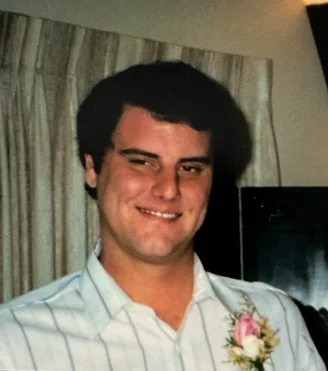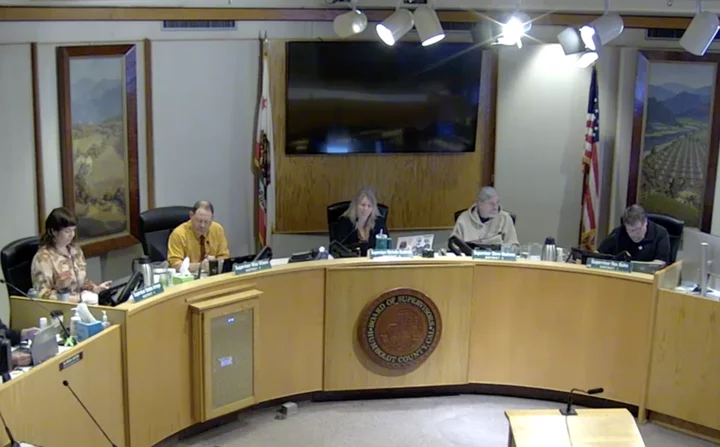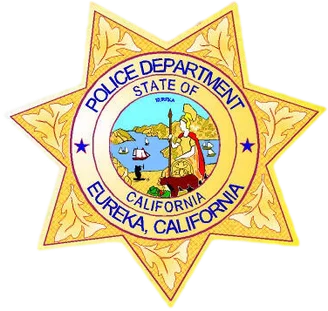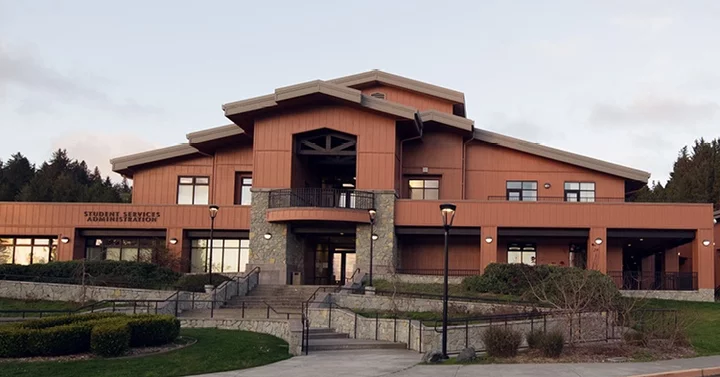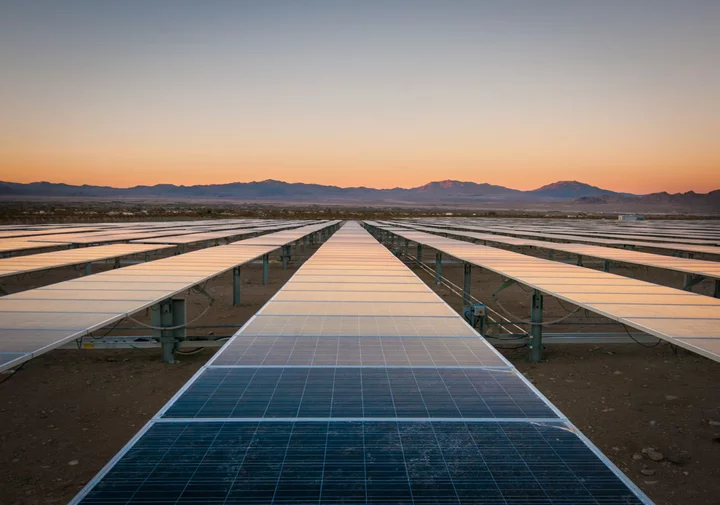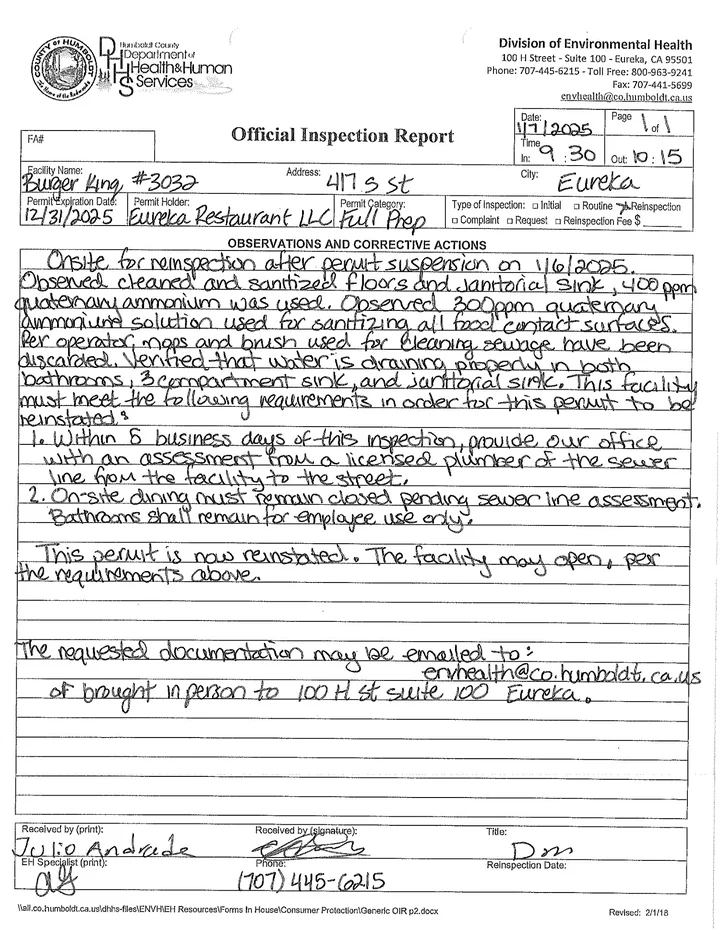OBITUARY: Donald George Bernardi, 1957-2024
LoCO Staff / Wednesday, Jan. 8 @ 6:56 a.m. / Obits
Don Bernardi was
born March 3, 1957, at the old Trinity Hospital near Humboldt State
University and passed away December 17, 2024, in Eureka. His wife of
36 years, Angela, was by his side. Don is survived by his wife,
Angela, and their son, Nathan, both of Arcata; his sister, Linda
(Bernardi) Kretsinger, of Eugene, Oregon; and Linda’s two children,
Jana Seiler, and Jeff Kretsinger. His mother-in-law and sister-in
law, Carol Dellabama and Beth Dellabama, both of Arcata, survive him
as well.
Don developed many long friendships over the years: Don and Julie Kaufman, Don Johnson, Don Miller, Randy Willis and John Bullwinkel. If I’ve overlooked anyone, I apologize now.
Don was preceded in death by his parents, Gino and Dorothy Bernardi, as well as his brothers-in-law, Russ Dellabama and Steve Kretsinger.
Don enjoyed everything that the North Coast had to offer, from foraging for mushrooms, fishing, crabbing, clamming, hunting and backpacking in the early days. Spending time at Redwood Creek with his close friends, Karl and Tedi Jensen, was a joy for him. Don was known as the “King of the BBQ” because of his culinary skill. He taught several friends to process and can the tuna that they had caught!
Don was a graduate of Pacific Union Elementary School, and a 1975 graduate of Arcata High School.
Don always knew he would follow in his dad’s footsteps by driving truck, and he made a career of hauling wood products all over the north state and southern Oregon. Don worked for Alto Brothers for a few years in the late ‘70s, then spend the next 37 years with Bettendorf Trucking. Hauling logs for Hank Combs was most enjoyable for him because it was what his dad, Gino, did, and what his dad had taught him to do so many years ago.
Thank you, Angela, Nathan and Linda for the privilege of writing these last words for my friend and sharing all that Don meant to me.
There will be a celebration of life in the late spring of 2025. You will be missed, brother.
Eternal rest grant unto him, O Lord, and let perpetual light shine upon him. Rest in peace.
###
The obituary above was submitted on behalf of Don Bernardi’s loved ones. The Lost Coast Outpost runs obituaries of Humboldt County residents at no charge. See guidelines here. Email news@lostcoastoutpost.com.
BOOKED
Today: 8 felonies, 11 misdemeanors, 0 infractions
JUDGED
Humboldt County Superior Court Calendar: Today
CHP REPORTS
Us199 / S Fork Rd (HM office): Trfc Collision-1141 Enrt
21459-21882 Kneeland Rd (HM office): Trfc Collision-Unkn Inj
Summer Ln / Scenic Creek Dr (HM office): Missing Indigenous
ELSEWHERE
Governor’s Office: First Partner Jennifer Siebel Newsom leads Gender Equity Summit on technology and well-being
RHBB: Solo Vehicle Crashes Into Guardrail on 101 Between Myers Flat and Weott, According to CHP CAD
County of Humboldt Meetings: In-Home Supportive Services Advisory Board meeting - Nov. 24, 2025
County of Humboldt Meetings: In-Home Supportive Services Advisory Board meeting - Sept. 25, 2025
TODAY in SUPES: With Some Apprehension, Board OKs Potential Path to Legitimacy for Yee Haw Communal Living Property
Ryan Burns / Tuesday, Jan. 7 @ 4:30 p.m. / Local Government
The Humboldt County Board of Supervisors (from left): Natalie Arroyo, Mike Wilson, Michelle Bushnell, Steve Madrone and Rex Bohn. | Screenshot.
###
How do you solve a problem like Yee Haw?
For years now — and especially in recent months — county officials have been grappling with the ethical, legal and public health implications of the “intentional community” near Trinidad, where some two dozen low-income residents live in un-permitted makeshift dwellings replete with violations of county code — as is the 10-acre property on which they sit.
Back in September, the Board of Supervisors gave property owner Charles Garth 39 weeks (until late June of this year) to fix the code violations at 473 Quarry Road or else the county would proceed with tenant eviction and abatement measures, including environmental cleanup as well as demolition and removal of un-permitted structures.
At today’s meeting of county supervisors, staff with the Planning and Building Department reported that Garth and his tenants have made progress on addressing many of the public health concerns onsite, and Garth has submitted a petition that, if approved, could provide a pathway to making Yee Haw a fully permitted “Alternative Lodge Park.”
Granted, there’s a long way to go before that could happen, with perhaps $100,000 worth of technical studies and permitting fees required on top of property renovations to meet health and building codes and comply with the Americans with Disabilities Act, plus tens of thousands of dollars in unpaid fines.
Senior Planner Steve Lazar explained that while Garth applied for a general plan amendment and zone reclassification, staff believe the best path forward would instead be to amend the Tiny House Village provisions of the county’s zoning ordinance so this property could legally accommodate its multiple residences.
Lazar noted that two portable toilets and a hand-washing station have been installed on the property, as requested, and testing of the onsite water well revealed no bacteria.
“I think it’s safe to say that they’re acting in good faith to work towards compliance with these public health directives,” Lazar said, “but there remains work to be done.”
Garth was on hand to address the board, though he didn’t have much to say.
“This isn’t our first dance,” he said. “Me and the county have been doing this for quite a while. … You haven’t shut me down yet because we keep taking steps forward [and] you keep taking steps forward.”
He said he appreciates the work that county staff has done toward finding an alternative to eviction and abatement.
Fifth District Supervisor Steve Madrone has worked closely with Garth and the Yee Haw residents, and in public meetings he has been a staunch advocate for finding a way to accommodate the community, even if it requires bending or rewriting some rules.
But his fellow supervisors proved a bit more wary, especially First District Supervisor Rex Bohn and (today, at least) Third District Supervisor Mike Wilson.
Bohn said he worried that changing the zoning ordinance as requested — allowing emergency housing villages on land zoned for agriculture — could open the door to other developments of this kind all around the county. He also voiced skepticism about Garth’s ability and willingness to bring his property up to code by the deadline. Bohn also said that some of the junk vehicles that have been removed from Yee Haw were dumped in his district, near Loleta.
“So the problem didn’t go away; the problem got moved,” he said.
Madrone thanked staff for their work and said he’d be happy to change some rules.
“Does this open the door [for similar low-income communities]? Yeah, thank goodness, because we have a housing problem,” he said.
Madrone, who has a long history of advocating for composting privies, also suggested modifying the county’s waterless toilet ordinance. He failed to get traction with that request.
Wilson voiced concerns about “spot zoning” and the parcel’s access to public services such as sewer, water, public transit and fire protection.
Second District Supervisor Michelle Bushnell, whose one-year term as board chair began with today’s meeting, said she was worried about establishing a double standard. Garth’s petition asks the county to make an exception to its typical requirements for a Category Four road, and Bushnell noted that local weed growers have typically not been afforded such leeway.
During the public comment period, nearly all of the speakers voiced support for the Yee Haw community and the county’s efforts to accommodate it, though several of the speakers were residents.
When the supervisors resumed their deliberations, Wilson said he remains concerned about the long-term sustainability of this community given Garth’s track record and his status as a private landowner. He suggested possibly establishing a nonprofit so that residents could take advantage of grant funding.
Wilson also noted that changing the land use of the parcel from timberland to residential estates would significantly increase Garth’s property value while potentially opening the door to future subdivision of the property into four 2.5-acre estates with two residences apiece.
Eventually, despite these reservations, the board unanimously approved a motion to accept staff’s recommendation, thereby creating the path to legitimacy for Garth and his property. However, the motion, which was made by Madrone, included a provision to require Garth to pay close to $40,000 to reimburse county staff for its work on code enforcement at the property.
Airport hangar rent increase
Early in the meeting, during the public comment period for non-agenda items, several local pilots stepped to the lectern to voice concerns about recent airplane hangar rent increases at all county airports, a fee hike that some found galling given the sorry state of maintenance at the facilities.
One pilot said the rent increase forced the Northern Air Flight School/fixed-base operation (FBO) to close, though he and volunteers are working to revive it. Another complained that his hangar doors haven’t worked for years, and yet he was recently sent a bill for $2,000 in back rent.
“I feel like you guys are trying to kill general aviation,” pilot Dan Sayer said. “We’re not rich. We’re just trying to make it. We need a little service.”
Bushnell encouraged the pilots to send emails to the board, as that would make follow-up easier.
No paid holiday to mourn President Carter
Late in the meeting, prior to adjourning closed session to discuss legal matters, the board weighed whether or not to grant employees a paid day off to mourn the Dec. 29 death of former U.S. President Jimmy Carter.
Chair Bushnell, perhaps responding to some public side-eye about the proposal, took pains to note that it wasn’t her idea! She sponsored the agenda item as board chair but did not personally have a preference either way, she said.
County Administrative Officer Elishia Hayes said there’s some precedent for taking such a paid day of mourning: The county took one after former President George H.W. Bush died in 2018, for example. Plus, the current president called for this national day of mourning, she said.
“From my perspective, it’s either something that we do consistently or we don’t do at all, and I’m okay with making that decision today,” Supervisor Wilson said.
A couple of the supervisors noted that the county doesn’t exactly have money to burn at present, and the board ultimately decided not to give employees Thursday off with pay, though if they truly need that time to grieve they’ll be allowed to use some of their accrued paid time off, or take the day off without pay.
Arcata Man Arrested for Attempted Homicide Following Truck-Ramming, Hatchet Attack Incidents Last Week, Eureka Police Say
LoCO Staff / Tuesday, Jan. 7 @ 4:18 p.m. / Crime
Press release from the Eureka Police Department:
On 01/04/2025 at approximately 1853 hours, an Officer with the Eureka Police Department observed a large pickup truck eastbound on 5th street following a small blue Subaru sedan.
The driver of the truck repeatedly rammed the Subaru causing it to swerve across all lanes of 5th street for several blocks, and eventually crashed the vehicle into the parking lot of the Red Lion Pub. This resulted in the victim of the Subaru receiving injuries to his face/head and exiting his vehicle claiming the person was trying to kill him. The victim advised the Officer that the suspect had been following him for several miles and continued to ram his vehicle.
The suspect was placed in custody and the vehicle was cleared. During the search of the vehicle, officers noted what appeared to be a hatchet or tomahawk on the rear floorboard. Both the vehicle and weapon matched the description of what was reported during an assault on 01/03/25. The vehicle was towed from the scene for evidence pending a search warrant related to the following investigation.
On 01/03/2025 at approximately 2343 hours, a male victim was standing in front of a business in the 600 Block of W. Harris, when he was attacked and struck several times on the head and upper body by a male suspect with a hatchet. The victim escaped into the parking lot, was briefly chased by the suspect, who then stopped. The victim went to a residence across the street and asked for help.
Officers arrived on scene as the victim was being transported by ambulance to St. Joseph Hospital. The witnesses told officers that the suspect in the assault drove past the residence honking his horn and yelling at them and provided identifying information for the vehicle.
The suspect in both of the above incidents was identified as Carl Stover (42 years old), from Arcata. Stover was arrested and booked into at the Humboldt County Correctional Facility for Attempted Homicide, Reckless Driving and Assault with a Deadly Weapon.
Would You Like to Help Watch Over College of the Redwoods’ New $120 Million in Bond Authorizations? Apply Now!
LoCO Staff / Tuesday, Jan. 7 @ 2:29 p.m. / Education
File photo: CR.
Press release from College of the Redwoods:
In the November election, College of the Redwoods successfully secured voter approval for Measure I, authorizing up to $120 million in general obligation bonds to support local educational infrastructure improvements. Measure I was passed under the guidelines of Prop 39, which requires financial accountability and the formation of an Independent Citizens’ Bond Oversight Committee.
In compliance with these requirements, CR’s Board of Trustees has officially established the oversight committee, tasked with ensuring transparency and proper use of bond funds to enhance district facilities. The committee was approved by the CR Board of Trustees at a public meeting on January 7th, 2025.
The Committee will play a key role in ensuring transparency and accountability in the use of bond revenues. According to Administrative Procedure (AP) 6740, the committee’s primary purpose is to:
- Inform the public about the expenditure of bond revenues;
- Review and report on the proper expenditure of taxpayers’ money for school construction; and
- Advise the public as to the District’s compliance with the Proposition 39 requirements as contained in the California Constitution
Members of the Citizens’ Bond Oversight Committee may engage in the following activities:
- Receive and review copies of the annual, independent financial audit;
- Inspect school facilities and grounds to ensure that bond revenues were properly expended;
- Receive and review copies of any deferred maintenance proposals or plans developed by the District; and
- Review efforts by the District to maximize bond revenues by implementing cost-saving measures.
The committee will have at least seven members, each serving two-year terms, with a maximum of three consecutive terms. Members won’t be paid but can be reimbursed for reasonable travel costs following CR’s travel policies. To be on the committee, members must meet certain criteria:
- One member must be involved in a local business organization.
- One member must be part of a senior citizen group.
- One member must belong to a recognized taxpayer organization.
- One member must be a current CR student who is active in a campus group. The student can continue serving for up to six months after graduation.
- One member must be engaged in supporting or organizing activities for the college.
Interested individuals can visit the CR website at this link to submit an application or learn more about the committee’s responsibilities.
Applications will be reviewed starting January 31st, 2025.
Eureka Man Arrested After Leading Law Enforcement on Wild Goose Chase Up and Down the Samoa Peninsula
LoCO Staff / Tuesday, Jan. 7 @ 11:59 a.m. / Crime
Press release from the Humboldt County Sheriff’s Office:
On Jan. 5, 2025, at around 10 a.m., a Humboldt County Sheriff’s deputy on patrol in the area of the Samoa Dunes Recreation Area observed a parked vehicle with expired registration and contacted the two adults who were sitting near the vehicle.
A male, later identified as Joshua Price, 44, of Eureka, falsely identified himself to the deputy as “Billy Waters” and asked to use the restroom, but instead he fled on foot into the nearby dunes. A records check on Price revealed that he had a felony arrest warrant stemming from a December 2024 violation of HS 11370.1(A): Possession of a Controlled Substance While Armed.
Deputies searched the area for Price. Deputies located some of his personal items but were unable to locate Price at the time.
Around 12 p.m., a deputy observed Price walking northbound on the beach near the Bay. Upon the deputy attempting contact, Price began sprinting and then entered private property at the Humboldt Bay Social Club, violating Penal Code 602 (trespassing).
Price was ultimately located in a wooded area of Samoa and, with assistance from a Game Warden, he was taken into custody without further incident. Price was transported and booked into the Humboldt County Correctional Facility for his outstanding warrant.
Anyone with information about this case or related criminal activity is encouraged to call the Humboldt County Sheriff’s Office at (707) 445-7251 or the Sheriff’s Office Crime Tip line at (707) 268-2539.
After a Bit of a Delay, Humboldt’s New Solar Energy Producer in Kern County is Now Operational
Hank Sims / Tuesday, Jan. 7 @ 11:09 a.m. / Energy
Sandrini at sunset. PHoto: EDP Renewables.
PREVIOUSLY:
###
It took a couple of years longer than expected, but a big new solar farm outside Bakersfield is now pumping electrons into the grid, and is providing for about a third of the total electrical needs of customers of the Redwood Coast Energy Authority.
“RCEA has been phenomenal to work with, and we’re really happy to get them closer to their goals,” said Tom Weirich, the head of marketing and stakeholder relations at EDP Renewables, in a quick conversation with the Outpost this morning. EDP is the developer of the Sandrini Solar Park, the solar farm in question.
Sandrini actually became operational sometime last month, Weirich said, but everything is looking good and they made the big announcement this morning.
Press release from EDP Renewables, via the Redwood Coast Energy Authority:
EDP Renewables North America LLC (EDPR NA), a leading renewable energy developer and a top-five renewable energy owner and operator in the United States, unveiled Sandrini I & II Solar Energy Park (Sandrini I & II) today in Kern County.
The two-phase solar energy park includes the 200 megawatt (MW) Sandrini I, which has a 15-year power purchase agreement (PPA) with Shell Energy North America (SENA), and 100 MW Sandrini II, which has a 15-year PPA with Redwood Coast Energy Authority (RCEA). Both phases of the project were commissioned in Q4, 2024.
Generating enough energy to power the equivalent of more than 76,000 California homes each year, Sandrini I has already disbursed more than $510,000 in tax payments to local governments since 2023. This has strengthened the local community by enhancing schools, roads, and other essential services. Additionally, approximately $15 million will be paid to local landowners, who lease a portion of their land to house the solar energy park’s infrastructure. Sandrini I & II employed more than 200 workers during construction and will create several permanent operations positions.
Power from Sandrini II will provide over a third of the total annual electric need for customers of RCEA’s community choice energy program. RCEA supplies more than 90% of the electricity for Humboldt County on California’s rural north coast. Completion of Sandrini II marks a large step toward RCEA meeting its goal of supplying 100% renewable energy to its customers by 2030.
RCEA is one of 25 community choice aggregators (CCAs) now serving communities in California. Sandrini II adds to 8,000 MW of new clean energy resources brought online to date by California’s CCAs. An additional 10,000 MW of new clean resources are in contract with these CCAs and are currently under development or construction. The CCAs’ clean energy projects collectively support over 36,000 construction jobs across California and the West.
“RCEA is committed to achieving our goal of supplying Humboldt County with 100% renewable energy. Sandrini II is a welcomed addition to our energy portfolio. We are proud to see another high-impact solar project go to work on behalf of our community,” RCEA Board Chair Sarah Schaefer said.
The construction and ongoing operations of Sandrini I & II will continue to aid in local spending and support of small businesses - namely restaurants, hotels, and retailers - located near the project. Both phases of the solar energy park also yield environmental benefits, including saving more than 381 million gallons of water each year compared to the amount of water that conventional generation sourceswould need to produce the same amount of capacity. These water savings, in turn, will help aid Kern County’s water conservation goals.
“Sandrini I & II represent EDP Renewables’ continued commitment to investing in California and are a direct contribution to California’s admirable target of achieving 100 percent clean electricity by 2045,” added Sandhya Ganapathy, CEO of EDP Renewables North America. “The Golden State is known for its leadership in solar energy, and EDP Renewables is elated to meet the growing demand for reliable, clean energy sources.”
EDPR NA is a clean energy leader in California, currently operating six renewable energy projects in the State, totalling 488 MW of capacity. Its projects include three phases of the Rising Tree Wind Farm, two phases of the Lone Valley Solar Park, and the Windhub A Solar Park. EDPR NA’s California portfolio also boasts several other solar parks and battery storage facilities, including the recently completed 200 MW solar and 40 MW storage Scarlet Solar Energy Park.
###
About EDP Renewables North America
EDP Renewables North America LLC (EDPR NA), its affiliates, and its subsidiaries develop, construct, own, and operate wind farms, solar parks, and energy storage systems throughout North America. Headquartered in Houston, with 61 wind farms, 19 solar parks, and eight regional offices across North America, EDPR NA has developed more than 11,700 megawatts (MW) and operates more than 10,500 MW of onshore utility-scale renewable energy projects. With more than 1,000 employees, EDPR NA’s highly qualified team has a proven capacity to execute projects across the continent. For more information, visit the website and follow us on LinkedIn.
About RCEA
Established in 2003, the Redwood Coast Energy Authority is a local government joint powers agency whose members include the Blue Lake Rancheria, Yurok Tribe, the County of Humboldt, the seven cities within the county, and the Humboldt Bay Municipal Water District. RCEA’s purpose is to develop and implement sustainable energy initiatives that reduce energy demand, increase energy efficiency, and advance the use of clean, efficient, and renewable resources available in the region. For more info, visit the website.
BK is BACK! The Eureka Burger King is Operational for the Time Being, But Only the Drive-Thru Part of it For Now
LoCO Staff / Tuesday, Jan. 7 @ 10:55 a.m. / Health
PREVIOUSLY:
Good news from the corner of Fifth and S streets: The floors of the Eureka Burger King have been sterilized and they’re serving customers again.
But don’t expect to encounter the bitties in the the BK lounge proper anytime soon, as the restaurant is limited to drive-thru services until such time as a longer-term assessment of the site’s sewage infrastructure can be performed.
Once again, here is the handwritten report from the Humboldt County Division of Environmental Health, which likes to keep it retro:

